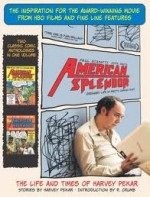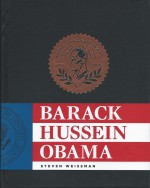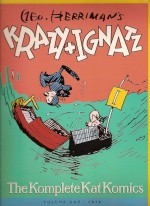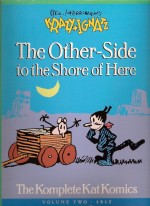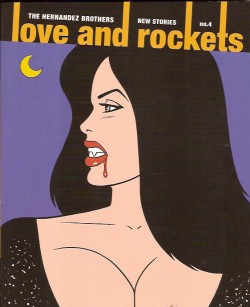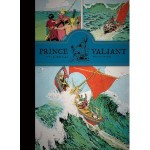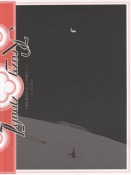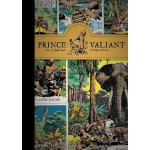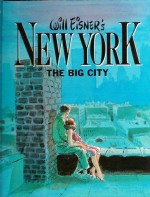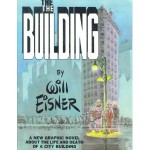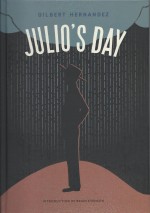
By Gilbert Hernandez (Fantagraphics Books)
ISBN: 978-1-60699-606-5
In the 1980s a qualitative revolution forever destroyed the clichéd, stereotypical ways different genres of comic strips were produced and marketed. Most prominent in destroying the comfy pigeonholes we’d built for ourselves were three guys from Oxnard, California; Jaime, Mario (occasionally) and Gilberto Hernandez.
Love and Rockets was an anthology magazine featuring slick, intriguing, sci-fi tinted hi-jinx of punky young things Maggie & Hopey – the outrageously beguiling las Locas – as well as heart-warming, terrifying, gut-wrenching soap-opera fantasies from the rural Central American paradise of Palomar.
Supreme synthesists, Los Bros Hernandez Boys enthralled and enchanted with incredible stories that sampled a thousand influences, conceptual and actual; everything from Comics, TV cartoons, masked wrestlers and the emergent exotica of American Hispanic pop culture to iconic German Expressionism. There was also a perpetual backdrop displaying the holy trinity of the young: Sex and Drugs and Rock and Roll – for which please hear alternative music and punk rock.
The result was dynamite. Mario only officially contributed on rare occasions, but Jaime’s slick, enticing visual feasts explored friendship and modern love whilst destroying stereotypes of feminine attraction through his fetching coterie of Gals Gone Wild, whilst “Beto†exhaustively crafted a hyper-authentic rural landscape and playground of wit and passion created for his extended generational saga Heartbreak Soup: a quicksilver chimera of breadline Latin-American village life with a vibrant, funny and fantastically quotidian cast.
Everything from life, death, adultery, magic, serial killing and especially gossip could happen in Palomar’s meta-fictional environs, as the artist mined his own post-punk influences through a powerfully effective primitivist style which blended the stylised mythologies and iconographies of comics, music, recreational drugs, gangs, sex, forceful, capable, dominating women and the inescapable bonds of family using a narrative format which is at the graphic vanguard of Magical Realism.
There’s fiction, there’s Meta-fiction and then there’s Gilbert Hernandez. In addition to his astonishingly captivating Palomar tales he has authored stand-alone books such as Sloth, Grip, Birdland and Girl Crazy, all marked by his boldly compelling, disingenuous artwork and a mature, sensitive adoption of literary techniques by writers like Carlos Fuentes and Gabriel GarcÃa Márquez: techniques which he has amplified and, visually at least, made his own.
He then went on to examine filmic and literary influences such as Roger Corman, John Cassavetes, Elmore Leonard and Jim Thompson as he broke new ground and reprocessed the cultural influences that shaped all us baby-boomers, with “adaptations†of the trashy B-Movies which featured as perennial plot “maguffins†in his stories and affected his cast of characters. Those became a little more actual in his “adaptations†of thrillers like Chance in Hell, The Troublemakers and Love from the Shadows…
Always winning critical acclaim but seldom financial reward, the brothers eventually went their own ways, but a few years ago creatively reunited to produce annual collections of new material in their particularly peculiar shared or, rather, adjacent pen-and-ink universes and this rapturously beguiling pictorial elegy began in Love and Rockets volume II, #1 but remained unfinished until completed in this stark evocative monochrome hardback.
Here Gilbert foregoes many of the signature elements he invented and the chaotically frenetic youth-fuelled backdrop he’s famous for to patiently detail the moving life-story of an ordinary man… and, of course, once you start looking you realise there’s really no such thing as ordinary…
It’s about families and friends, the secrets we must keep and how, even though the World changes, sometimes we just can’t…
I’d be doing you and the author a huge disservice by going into too much detail, but suffice to say that somewhere in Southern California a baby is born in 1900. From the start Julio is nourished and cherished by a loving family – all except his uncle Juan, whom only the infant’s older sister Sofia realised should be kept well away from all children at all costs…
Over 100 pages, until his passing in 2000, Julio grows up with friends Tommy and Araceli, dimly aware of yet barely affected by humanity’s great crises, although the fierce uncompromising nature of the times and the elements and environment shape the people of the village just as powerfully as any global war or Stock Market crash.
One tragic slip in a mere mudslide would come to affect the family for three tragic generations…
Moreover even in such placid outreaches, bullying, cruelty, bigotry and intolerance exist in abundance to mould young hearts and minds…
As he grows to maturity, Julio loses family, makes new friends and comes to realises he has a secret he cannot share with anyone: one that, despite the way the times change society before his eyes, he just cannot admit…
Dedicated to the proposition that big history happens somewhere else but its effects touch us all, this warm-hearted, deceptively heart-wrenching, challenging, and incontrovertibly groundbreaking epic is a grown-up comics fan’s dream come true and proves how far the medium has progressed.
From traditional world saving, anodyne fist-fights, fanciful fantasies and children’s escapism to the likes of Maus, One Bad Rat, Palestine, Persepolis, Pride of Baghdad Sailor Twain and so many more, comics have been continually evolving until they not only produce material equal to other art forms, but with Julio’s Day – the diamond point of the cutting edge of graphic narrative – at last arrive at masterpieces which can only be truly told as graphic narratives
…As you will surely see…
© 2013 Gilbert Hernandez. This edition © 2013 Fantagraphics Books, Inc. All Rights Reserved.

